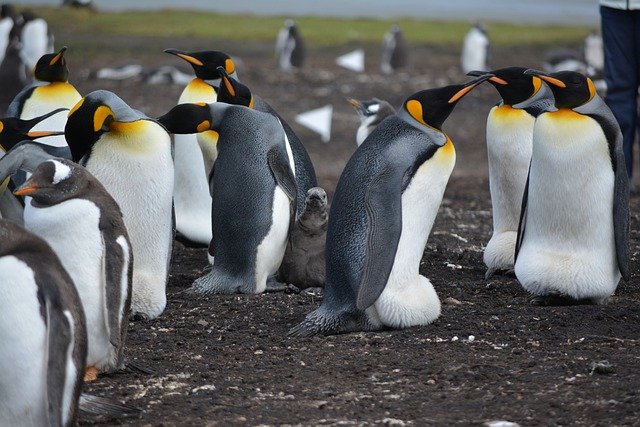
The Social Dynamics of Penguin Colonies: Cooperation, Communication, and Conflict Resolution
Penguins are often viewed as charming and comical creatures, waddling across icy landscapes in their tuxedo-like plumage. However, beneath this endearing exterior lies a complex social structure characterized by cooperation, communication, and conflict resolution. Understanding these dynamics provides valuable insights into the behavior and survival strategies of these fascinating birds.
Cooperation in Penguin Colonies
Group Living
Penguins are highly social animals that thrive in colonies, which can number in the thousands. Living in such large groups offers several advantages:
- Protection from Predators: By forming a dense crowd, penguins can reduce the risk of predation. The sheer number of individuals makes it difficult for predators to target a single bird.
- Thermoregulation: In harsh Antarctic conditions, huddling together helps penguins conserve heat. This behavior is especially crucial during extreme weather, where temperatures can plummet.
Collaborative Rearing
Many penguin species, such as the Emperor Penguin, exhibit cooperative breeding behaviors. Parents take turns incubating eggs and feeding chicks, ensuring that both the male and female contribute to the survival of their offspring. This shared responsibility enhances the likelihood of chick survival in a challenging environment.
Communication Among Penguins
Vocalizations
Penguins are known for their distinctive vocalizations, which play a crucial role in maintaining social bonds and coordinating group activities. Each species has its own unique calls, and within species, individual penguins can be identified by their specific vocal patterns.
- Mating Calls: During the breeding season, males use vocalizations to attract females and establish territory.
- Chick Communication: Chicks also have specific calls that help parents locate them in crowded colonies.
Body Language
In addition to vocalizations, penguins use body language to communicate. Displays of aggression, submission, or affection can be observed through postures, movements, and physical interactions. For instance, a penguin may bow or flap its wings to signal aggression or establish dominance.
Conflict Resolution
Aggression and Territoriality
While cooperation is essential, conflict is an inevitable part of social living. Penguins can be territorial, especially during the breeding season, leading to aggressive encounters. Males often engage in displays of strength to assert dominance and secure mating opportunities.
Conflict Resolution Strategies
Despite these aggressive tendencies, penguins have developed various strategies for conflict resolution:
- Non-violent Displays: Many conflicts are resolved through non-violent displays, where penguins will engage in posturing or vocalizations to establish dominance without physical confrontation.
- Social Bonds: Strong social bonds within colonies can help mitigate conflicts. Penguins that have established friendships or alliances may intervene in disputes, promoting harmony within the group.
Conclusion
The social dynamics of penguin colonies are a testament to the intricate balance between cooperation, communication, and conflict resolution. These behaviors not only enhance their survival in challenging environments but also illustrate the complexity of social interactions in the animal kingdom. As we continue to study these remarkable birds, we gain a deeper understanding of the social structures that govern their lives and the evolutionary significance of their behaviors.
By appreciating the social lives of penguins, we can foster a greater respect for these incredible creatures and the ecosystems they inhabit.
